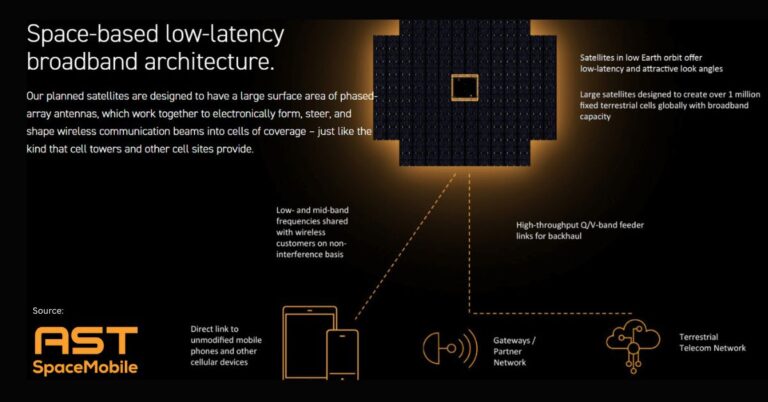Amazon Leo rebrand: LEO satellite broadband for enterprise and telecom
Amazon has moved its low Earth orbit broadband effort out of code-name mode and into a market-facing brand with strategic implications for telecom and enterprise buyers.
Brand launch and constellation status
Project Kuiper is now Amazon Leo, a direct reference to the low Earth orbit constellation underpinning the service. The rebrand signals a transition from R&D to commercial execution. Amazon reports more than 150 satellites in orbit today—roughly 153 by recent counts—following a string of successful launches and a completed prototype mission. The company says it will light up service as it adds coverage and capacity.
Constellation scale and launch cadence
Amazon’s plan targets roughly 3,000 satellites deployed across more than 80 missions. Six launches have occurred to date, including three rideshare flights on SpaceX Falcon 9 that delivered 72 spacecraft. Amazon also holds multi-year, multi-vehicle launch contracts announced earlier with Blue Origin, United Launch Alliance (ULA), and Arianespace to sustain cadence and diversify risk.
Early customers and go-to-market strategy
Amazon is lining up early adopters across mobility, media, and national broadband. Named customers and partners include JetBlue (aviation), L3Harris (defense and mission services), DIRECTV Latin America and Sky Brasil (video distribution and rural reach), and NBN Co in Australia. Amazon highlights mass-production lines for satellites and a portfolio of user terminals, including a phased-array design aimed at gigabit-class speeds for fixed and mobility use cases.
Why it matters for telecom and enterprise connectivity
The Amazon Leo brand clarifies positioning in a market where LEO is evolving from a niche to a core option for access, backhaul, and mobility.
LEO’s second inning: from best-effort to carrier-grade
First-mover momentum proved demand; now scale, performance, and integration will separate winners. Amazon joins a field where SpaceX’s Starlink recently crossed the 10,000-satellite mark, and where Eutelsat OneWeb and Telesat Lightspeed push enterprise-grade offerings. Amazon Leo’s timing aligns with a shift from best-effort connectivity to carrier-grade SLAs, deterministic latency, and enterprise integrations.
LEO, cloud, and edge convergence with AWS
Amazon can combine a global LEO network with AWS services, edge compute, and data pipelines. Expect tight integration with AWS networking, content delivery, and security stacks for data-heavy workflows at the edge. That could compress deployment timelines for use cases like remote branch connectivity, IoT telemetry offload, pop-up retail, disaster recovery, and sovereign workloads that benefit from localized processing with cloud on-ramps.
Competitive dynamics vs Starlink, OneWeb, Telesat
Amazon Leo will be measured against Starlink’s scale and OneWeb’s enterprise partnerships. Differentiators to watch: price-per-gigabit in Ka-band, mobility certifications in aviation and maritime, wholesale and MVNO-style models for carriers, and how well the platform plugs into SD-WAN/SASE stacks from vendors such as Cisco, Fortinet, and Palo Alto Networks. Procurement teams will also assess antenna size, power draw, and installation complexity across fixed and on-the-move scenarios.
Technology and network architecture
Amazon is emphasizing production throughput and advanced terminals, pointing to a design optimized for performance and operational efficiency.
User terminals, performance, and mobility
Amazon’s phased-array terminals target multi-gigabit peak rates with electronic beam steering across LEO passes. This is essential for mobility and resilient branch connectivity. Enterprises should scrutinize temperature tolerances, power options for off-grid sites, and the roadmap for smaller, lower-cost terminals to scale field deployments.
Spectrum, 3GPP NTN, and enterprise integration
Amazon Leo operates in high-throughput bands typical for LEO broadband (e.g., Ka-band), which delivers capacity but is sensitive to rain fade; mitigation via adaptive coding and site diversity will matter. On the standards front, watch for alignment with 3GPP Non-Terrestrial Networks (NTN) for 5G backhaul and future direct-to-device paths, plus interoperability with carrier-grade QoS, timing, and routing. Clean handoff to IPsec/MPLS underlays, BGP policy controls, and orchestration via SD-WAN controllers will be key for enterprise-grade deployments.
Risks, policy, and sustainability
Scale brings benefits but also regulatory and sustainability obligations that procurement teams should weigh in RFPs.
Orbital debris, safety, and transparency
Large constellations raise collision and debris concerns that affect long-term reliability and insurance costs. Buyers should request deorbit timelines, propulsion redundancy details, conjunction management practices, and participation in space situational awareness data-sharing. Transparent reporting builds confidence in network longevity.
Interference, siting, and network resilience
High-throughput Ka-band relies on gateway placement and clear sky paths, with weather mitigation strategies and terrestrial backhaul resilience at ground stations. Enterprises should plan for multi-orbit or multi-path failover, including GEO, fiber, or microwave, and evaluate dual-antenna options for session continuity across satellites and planes.
Next steps for buyers
Use the rebrand as a trigger to re-baseline LEO strategy, pilots, and vendor shortlists for 2025.
RFP checklist for LEO services
Request committed information rates, latency distribution (p50/p95), service availability by region, mobility certifications, terminal SKUs with power and environmental specs, security posture (device identity, zero-touch provisioning, FIPS/CC validation), and decommission/return processes. Ask for API access for telemetry and policy automation.
Pilots and enterprise integration
Stand up limited pilots in challenging links: rural branches, maritime assets, or air operations. Validate SD-WAN path selection, WAN acceleration, and SASE policy enforcement over LEO. Test data sovereignty controls, logging, and cloud on-ramps to AWS and multicloud. Benchmark total cost per delivered gigabit against Starlink, OneWeb, and terrestrial options.
2025 watch list and milestones
Track Amazon Leo’s coverage milestones, commercial service tiers, installer network readiness, and partnerships with carriers and systems integrators. Monitor aviation and maritime certifications, roaming or wholesale agreements with MNOs, and any announcements that blend Leo with AWS edge services. Regions to watch first: the U.S., Latin America, and Australia, given visible early customer activity.








































